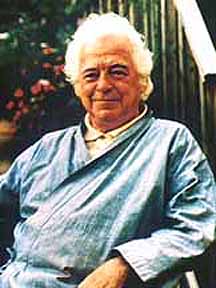A 'mandala' is a
visual mantra or Yantra (in Sanskrit). Esoteric paintings by Benjamin Creme (excerpts from The Esoteric Art of Benjamin Creme) "Esotericism might be described as the philosophy of the evolutionary process both in man and the lower kingdoms in nature. It is neither solely an art, nor a science; nor is it a religion, but partakes of something of all of these. It is the science of the accumulated Wisdom of the ages, but dynamic rather than academic in its application to our lives from day to day. It presents a systematic and comprehensive account of the energetic structure of the Universe and of man’s place within it, and it describes the forces and influences that lie behind the phenomenal world. It is also the process of becoming aware of, and gradually mastering, these forces."(Benjamin Creme, The Reappearance of the Christ and the Masters of Wisdom, Tara Press, 1980.) To the esotericist, an artist is someone who attunes himself to the vibration of Reality and gives that expression. Without expression there would be no art. Art, all painting, is a convention. The painter does not deal with flesh and blood, sinew and bones. He works with forms and colours, usually on a flat surface, and creates an artificial thing, either a sign or a symbol. Every art is a result of making signs. When a child makes an oval shape and puts two eyes and a stroke for a nose and another stroke for a mouth, it has created a sign which stands for "head" and we all recognize it. There are archetypal, universal signs which, as soon as we see them, we recognize as man, head, dog, horse or whatever, however unlike, in naturalistic terms, the sign may be to the original form. We read into these signs that for which we know they stand. Even the most naturalistic, photographic-type image, when it is placed on a flat surface is a convention and a sign of some kind. It stands for a head, a woman, a dog, a plate of apples or whatever. Signs can go further than being simply signs; they can, if conveying meaning, become symbols. As a painter, I think my own painting has moved from the sign to the symbol. Symbols, if they are truly symbols, do carry meaning, and I believe something can be said, not to explain the picture, but to give an insight into the ideas behind the image; probably no more than that. It is really the provision of a 'way in' for the viewer; but to know what the picture is about is not the same thing as to experience the painting.
|
Back
